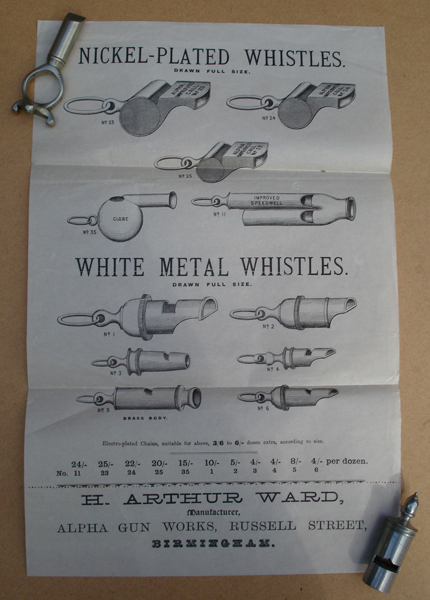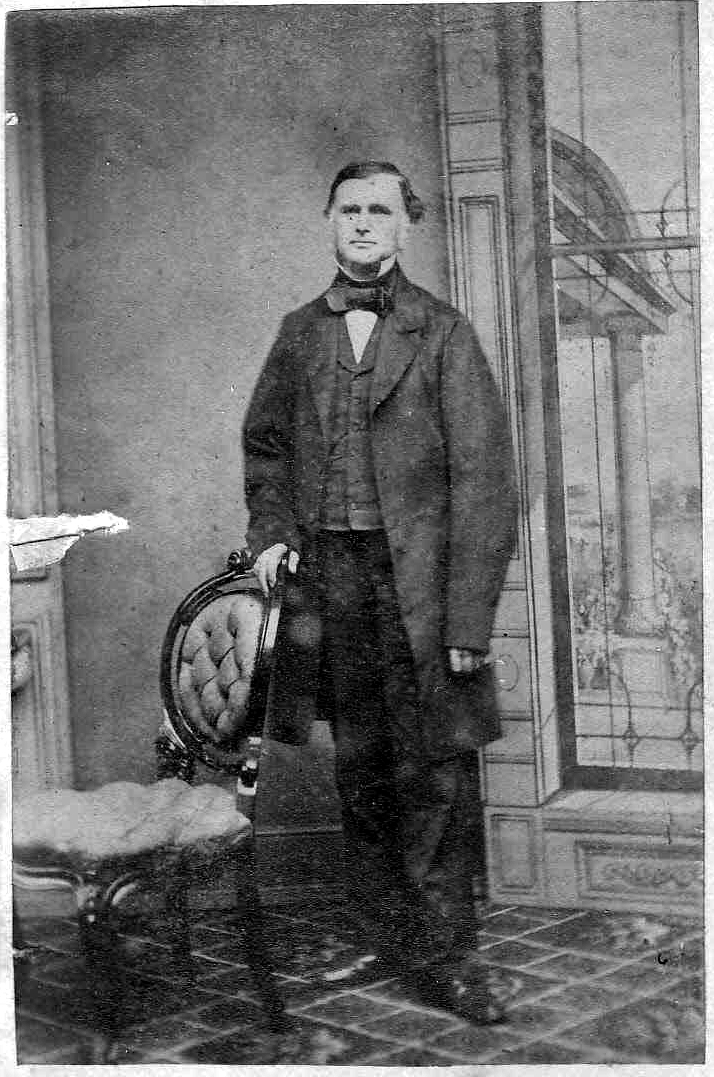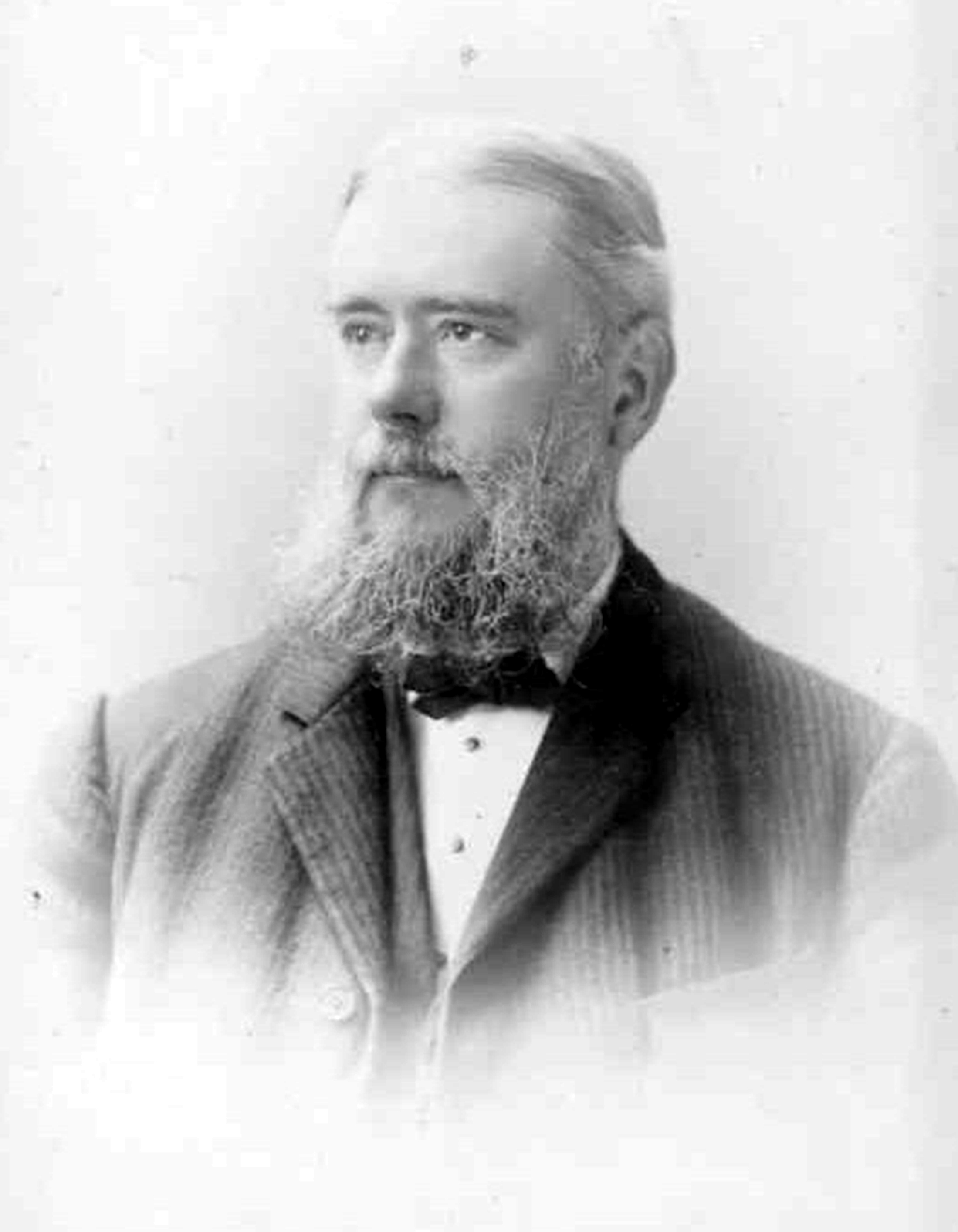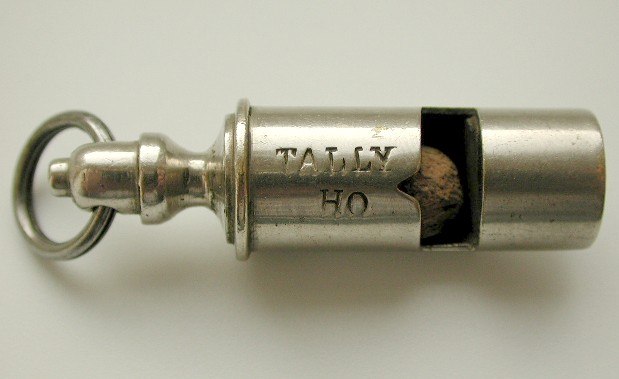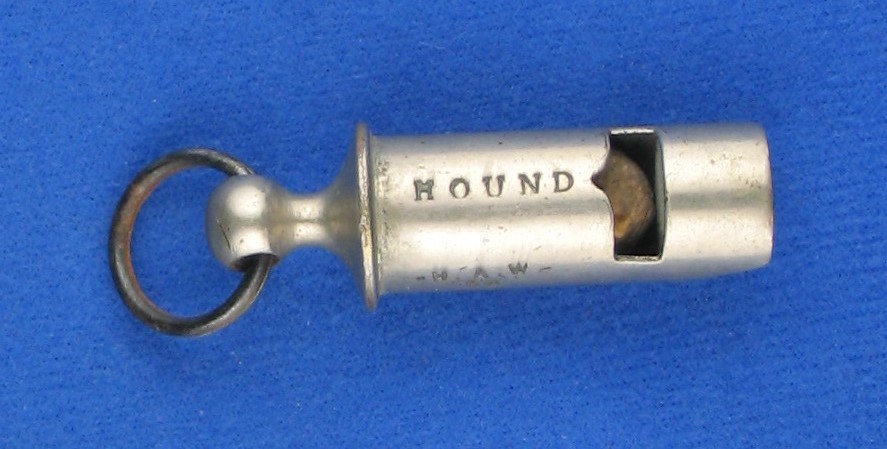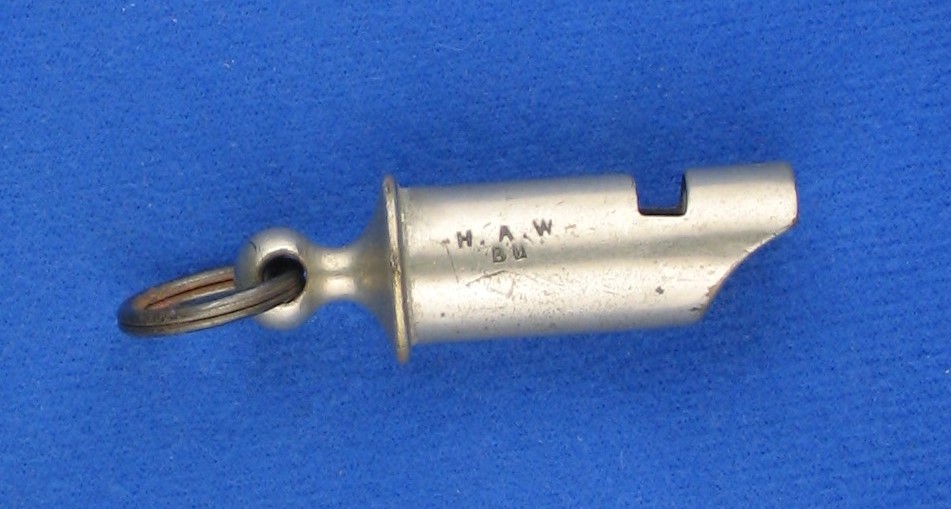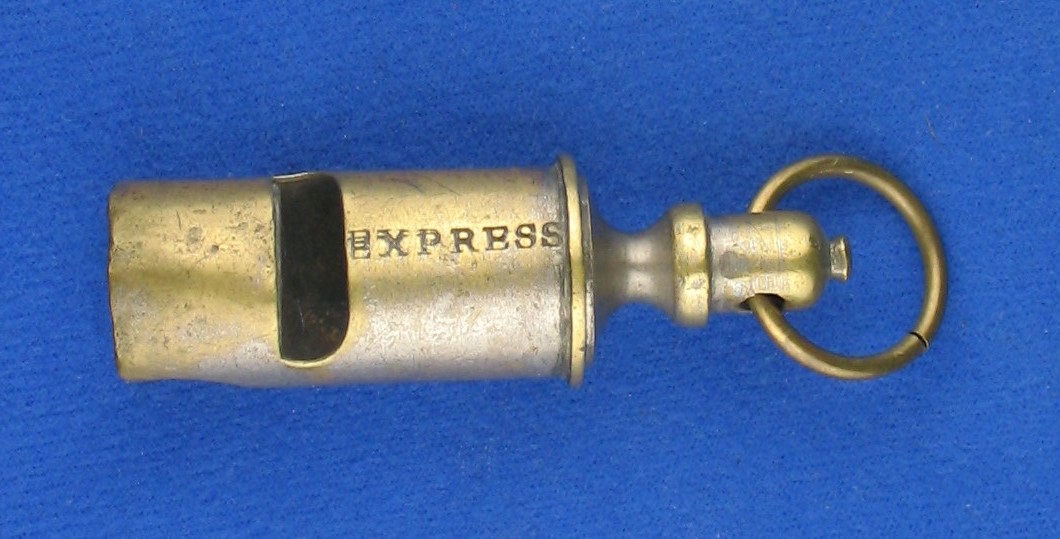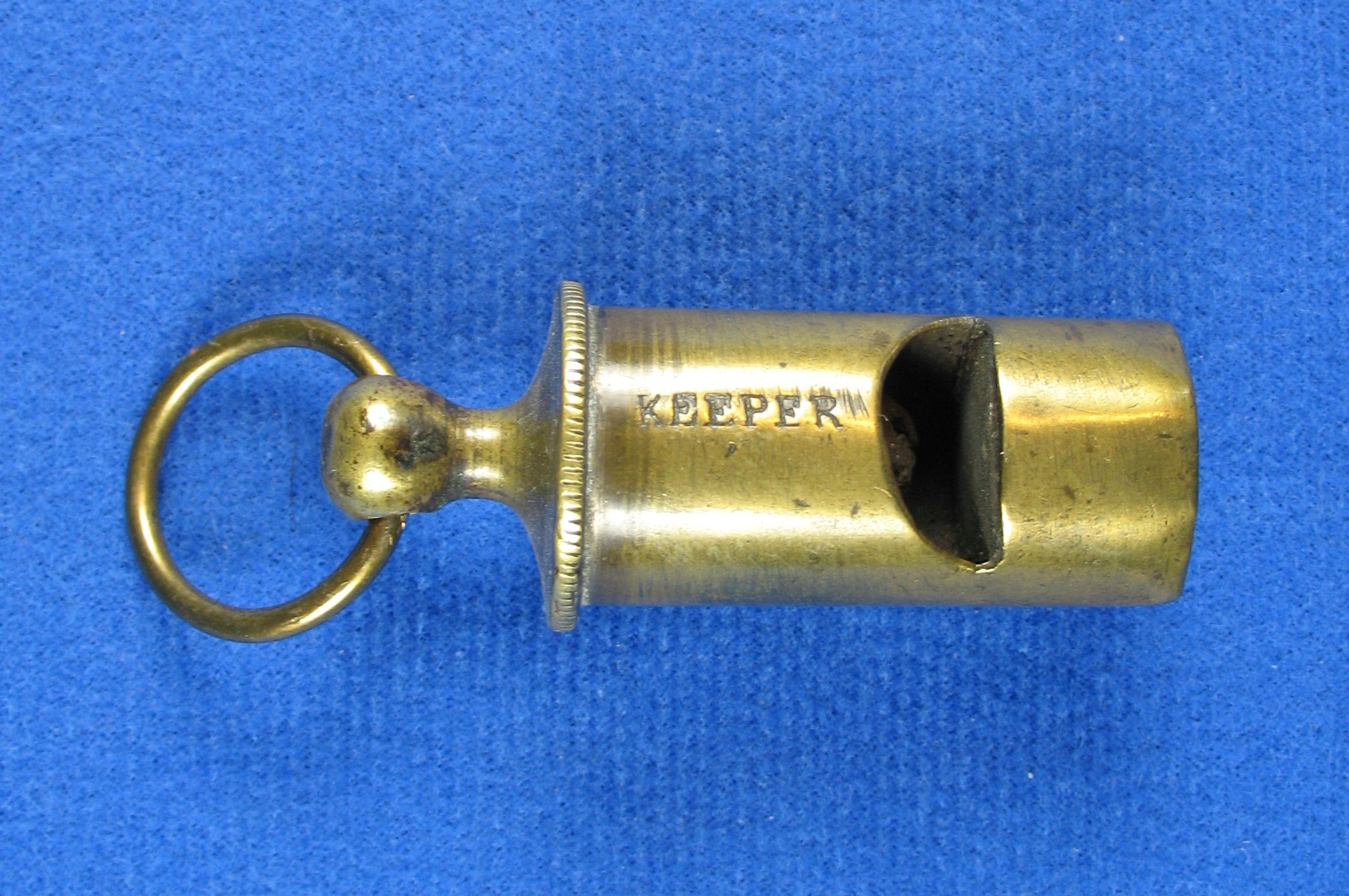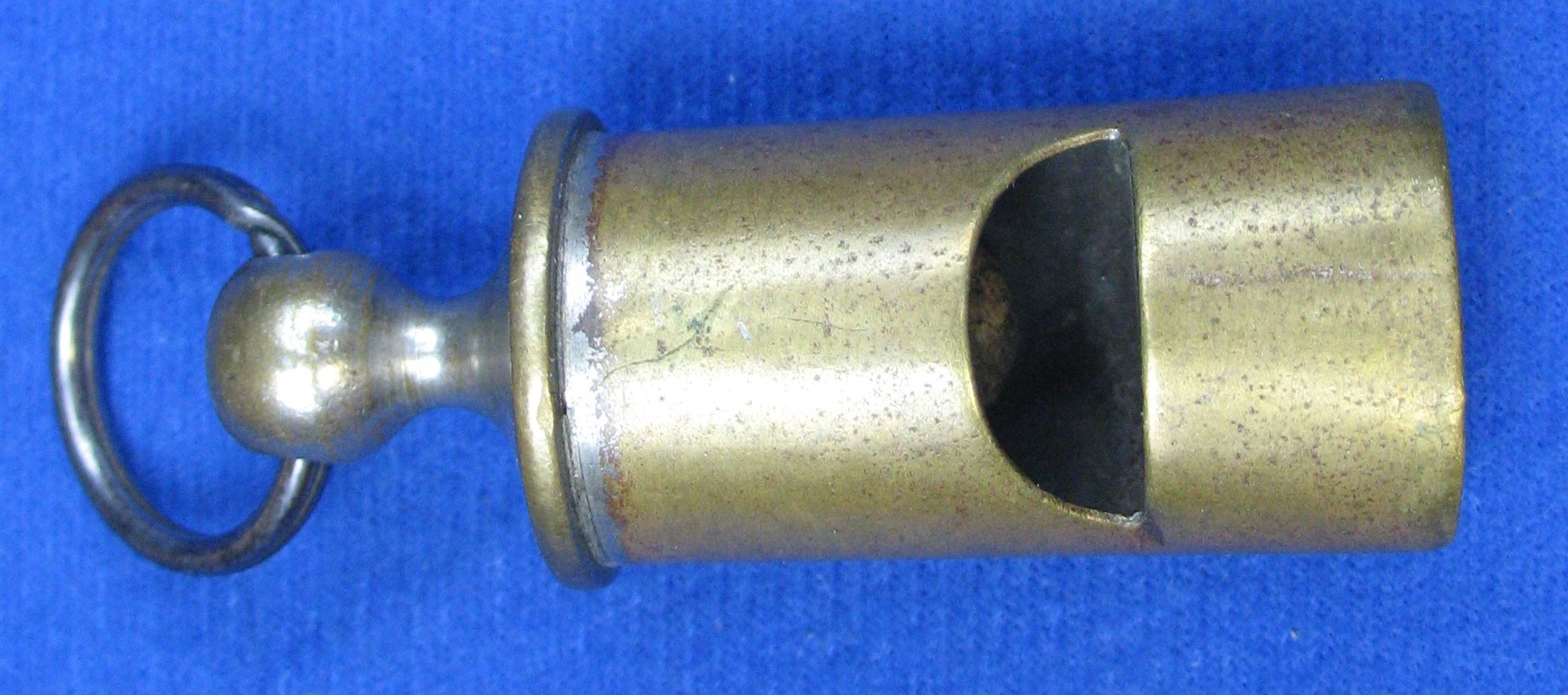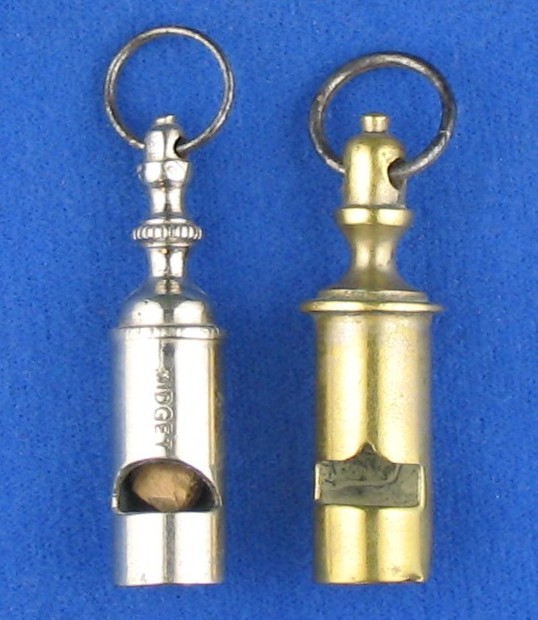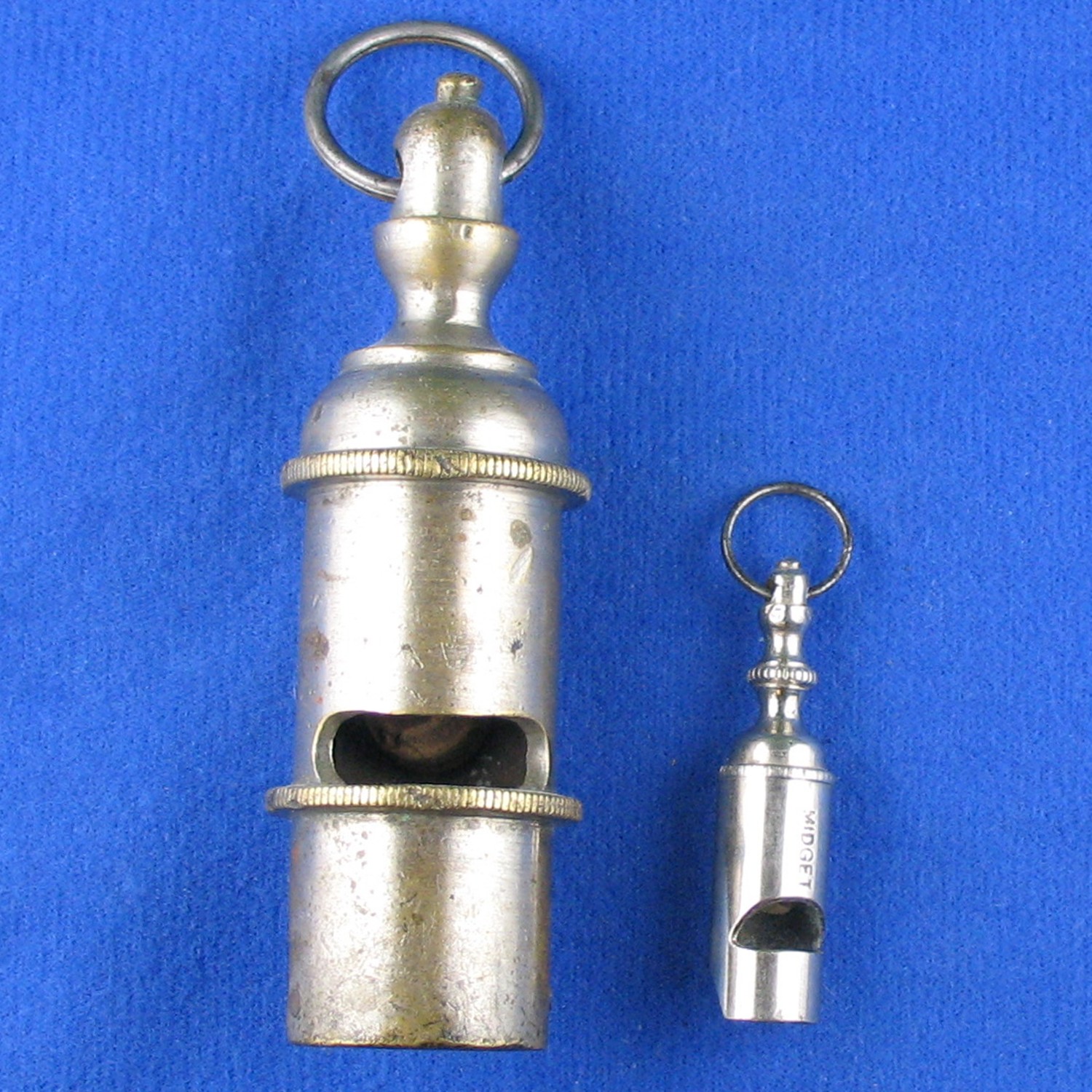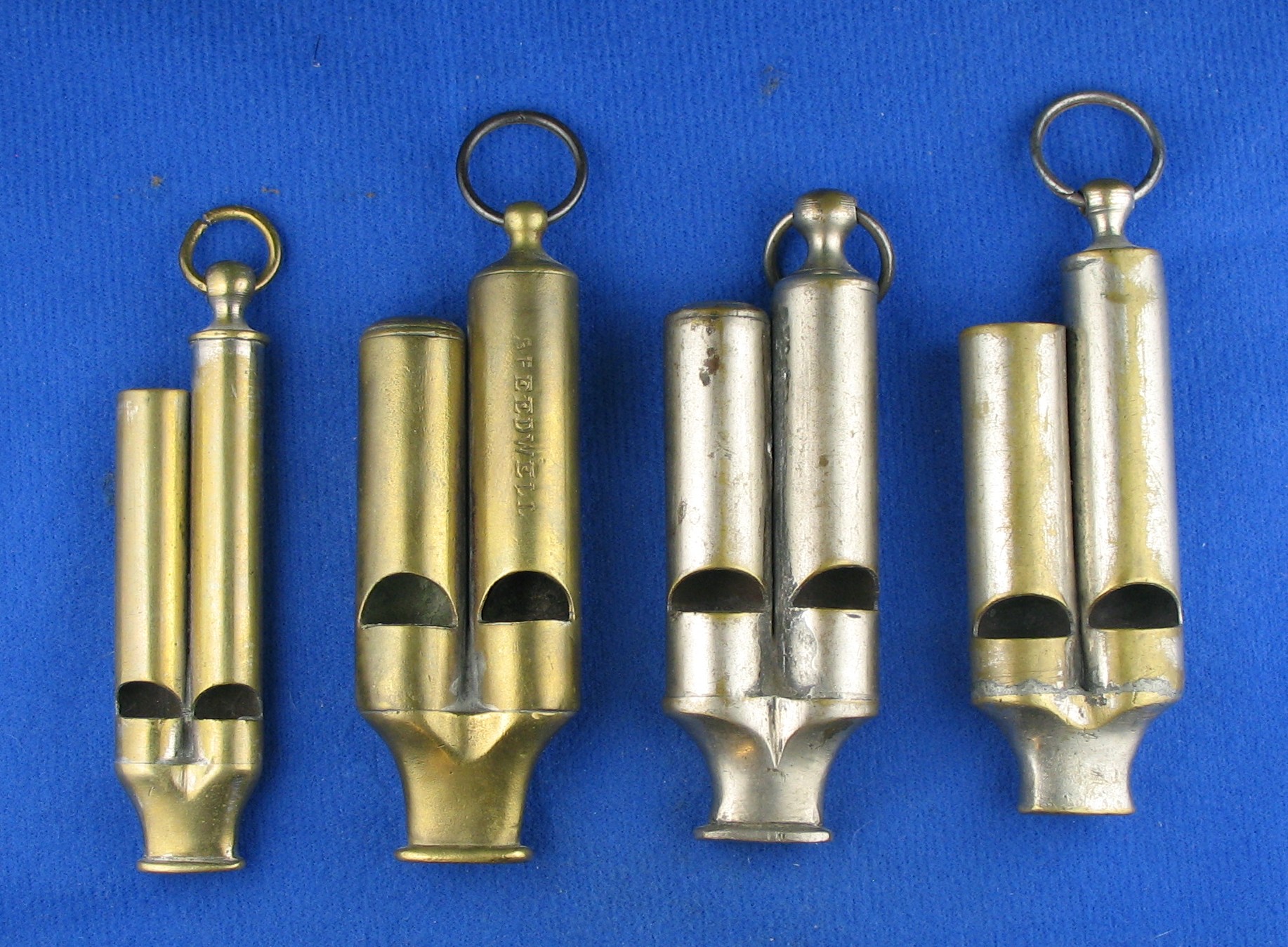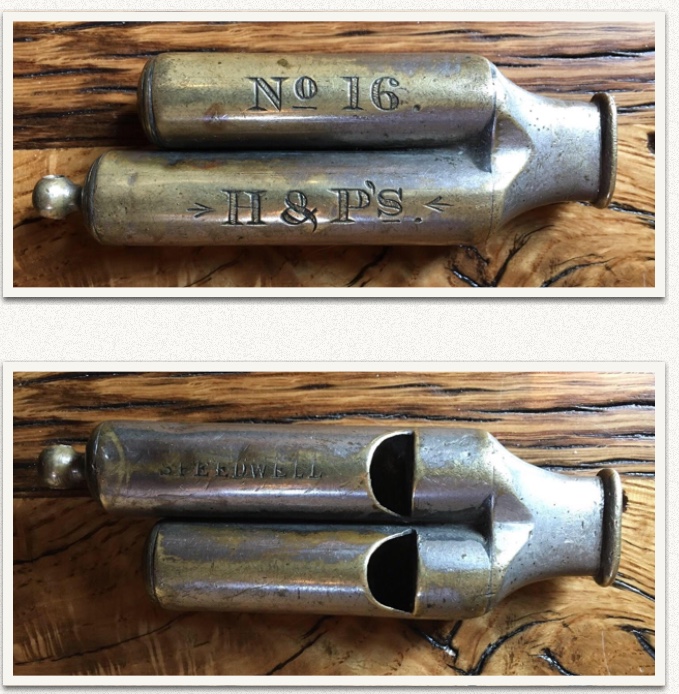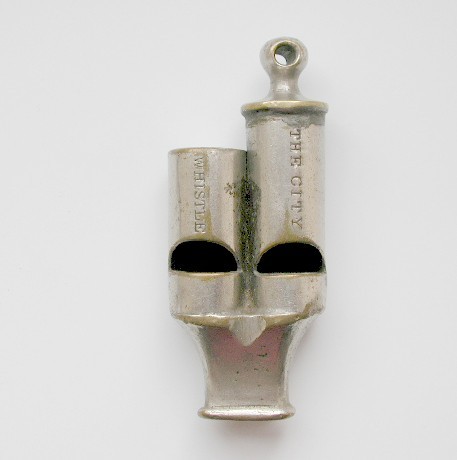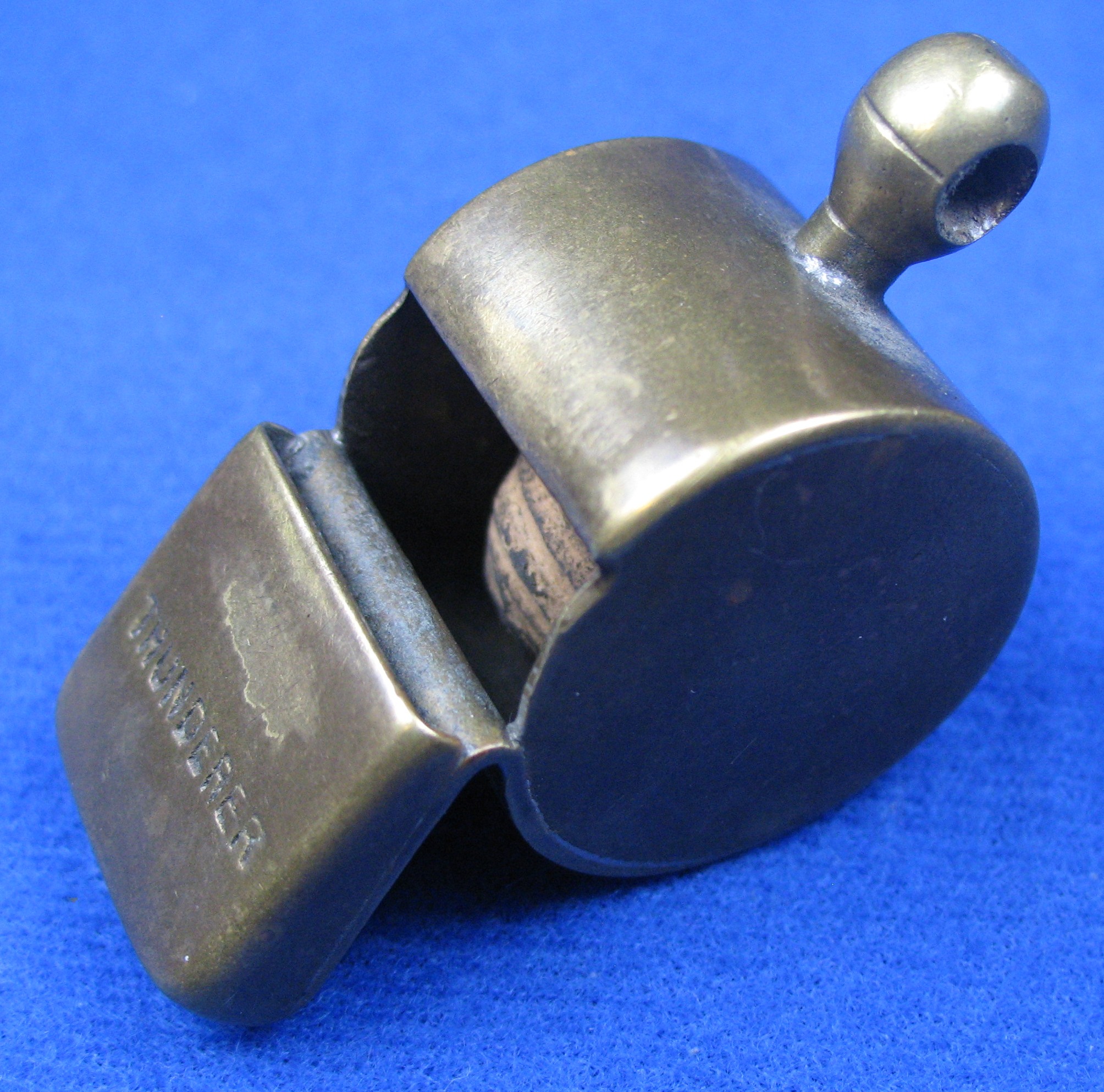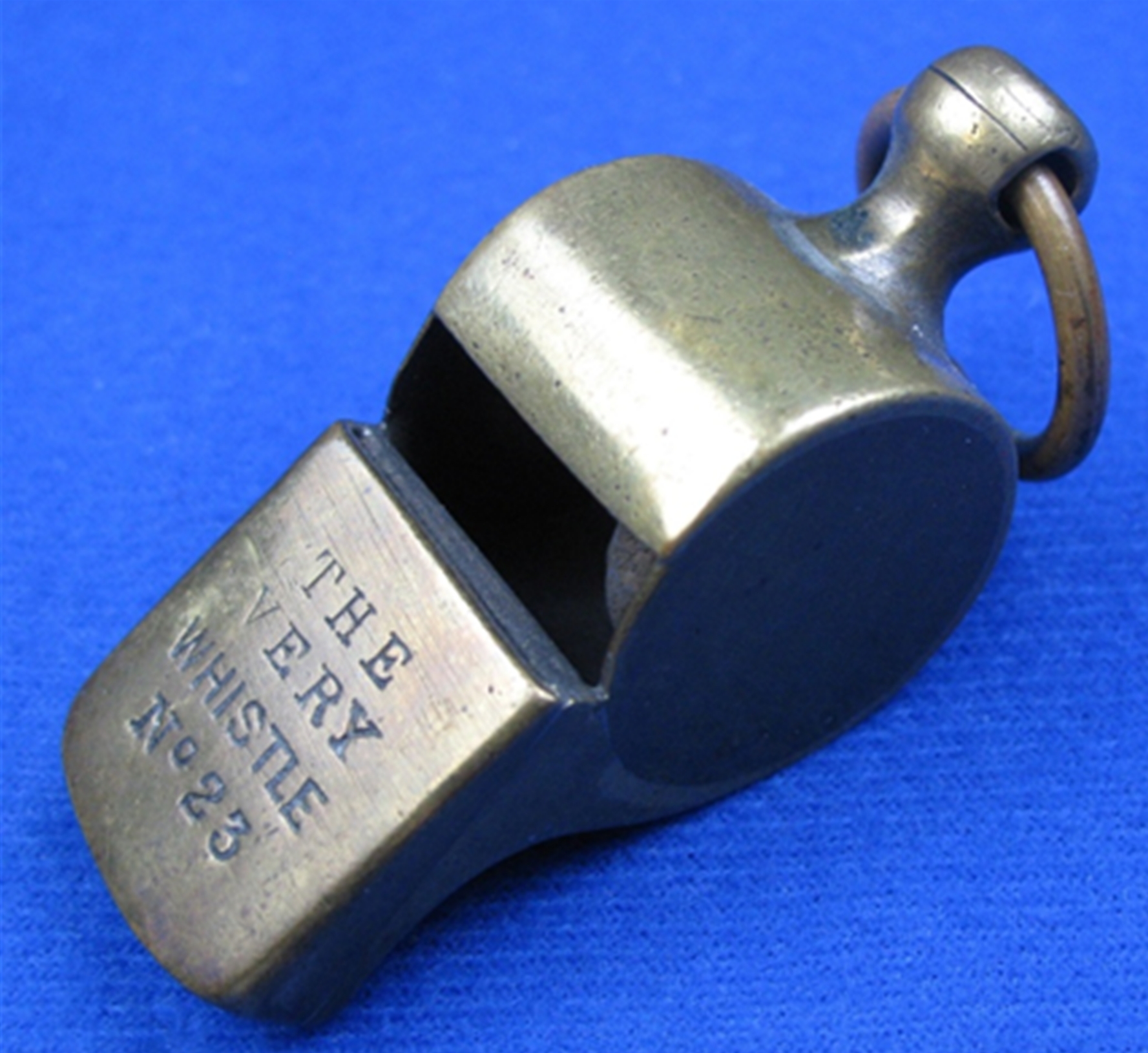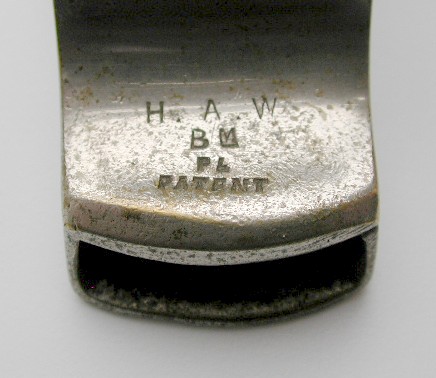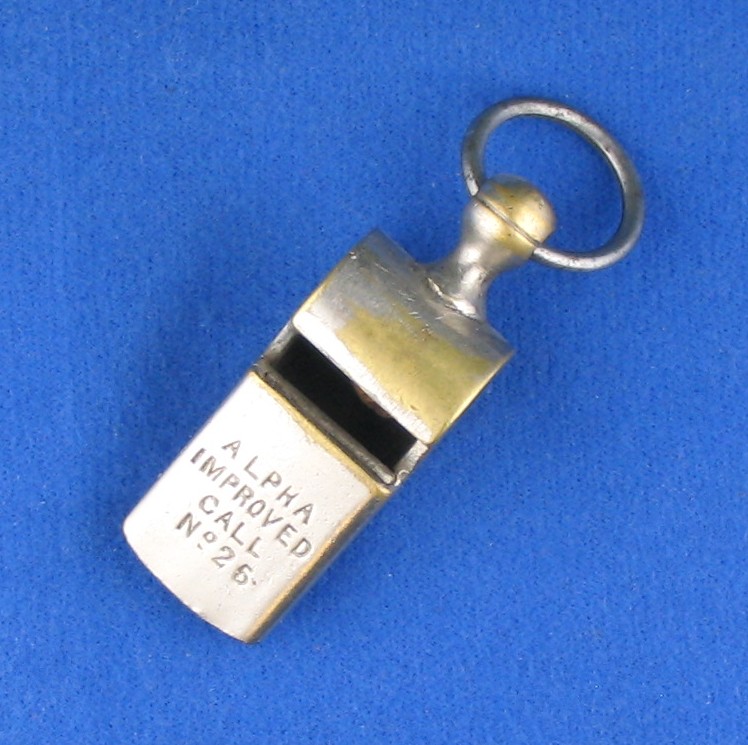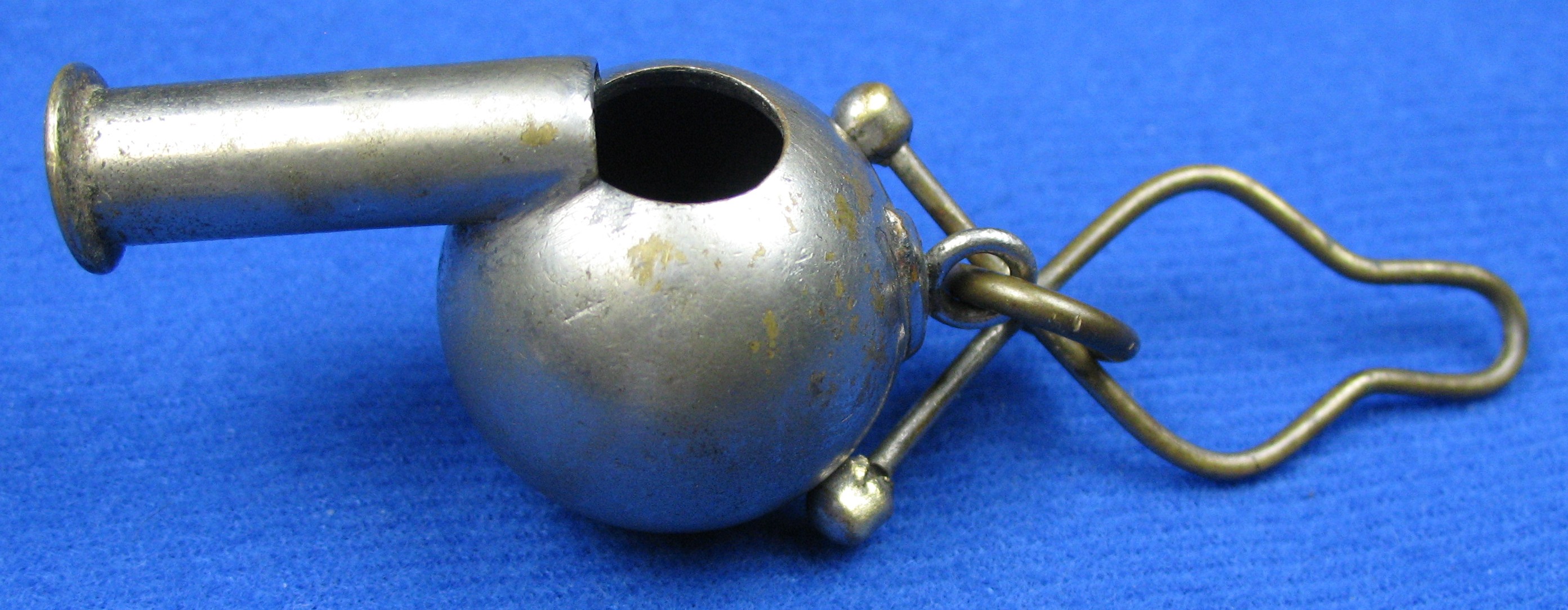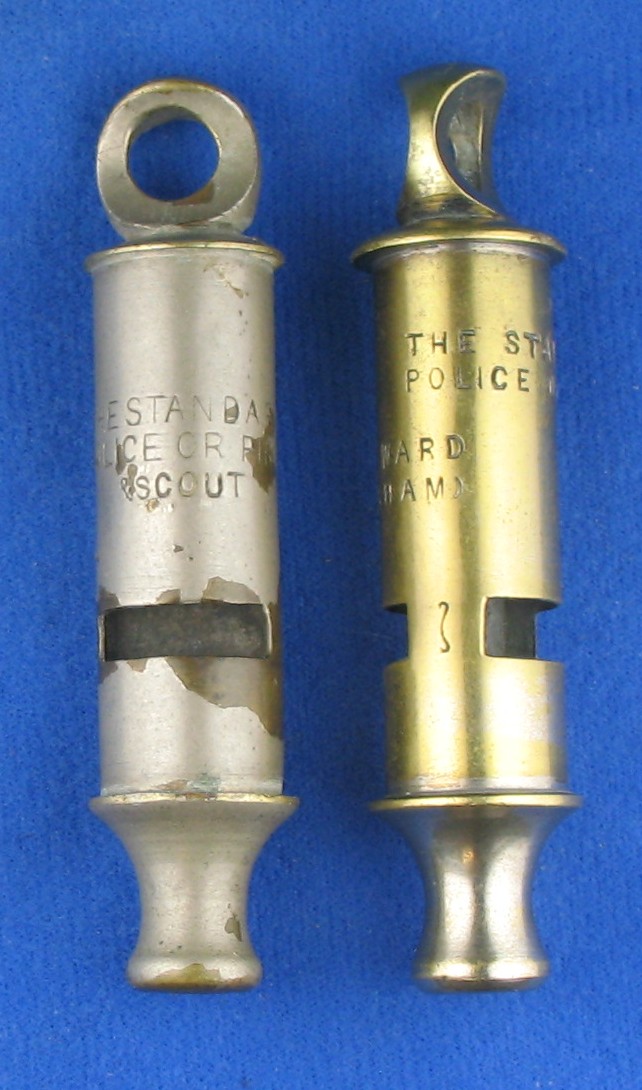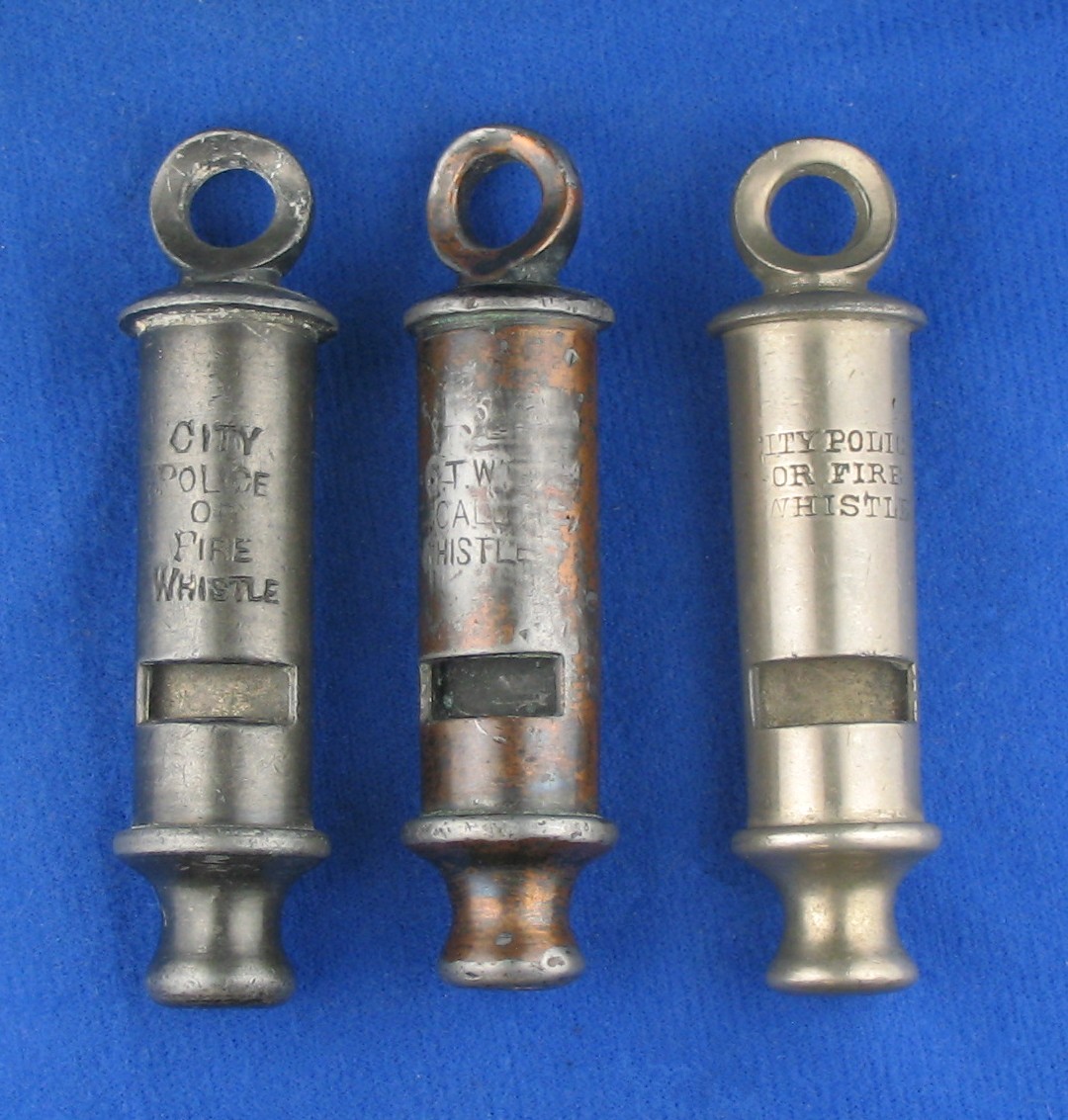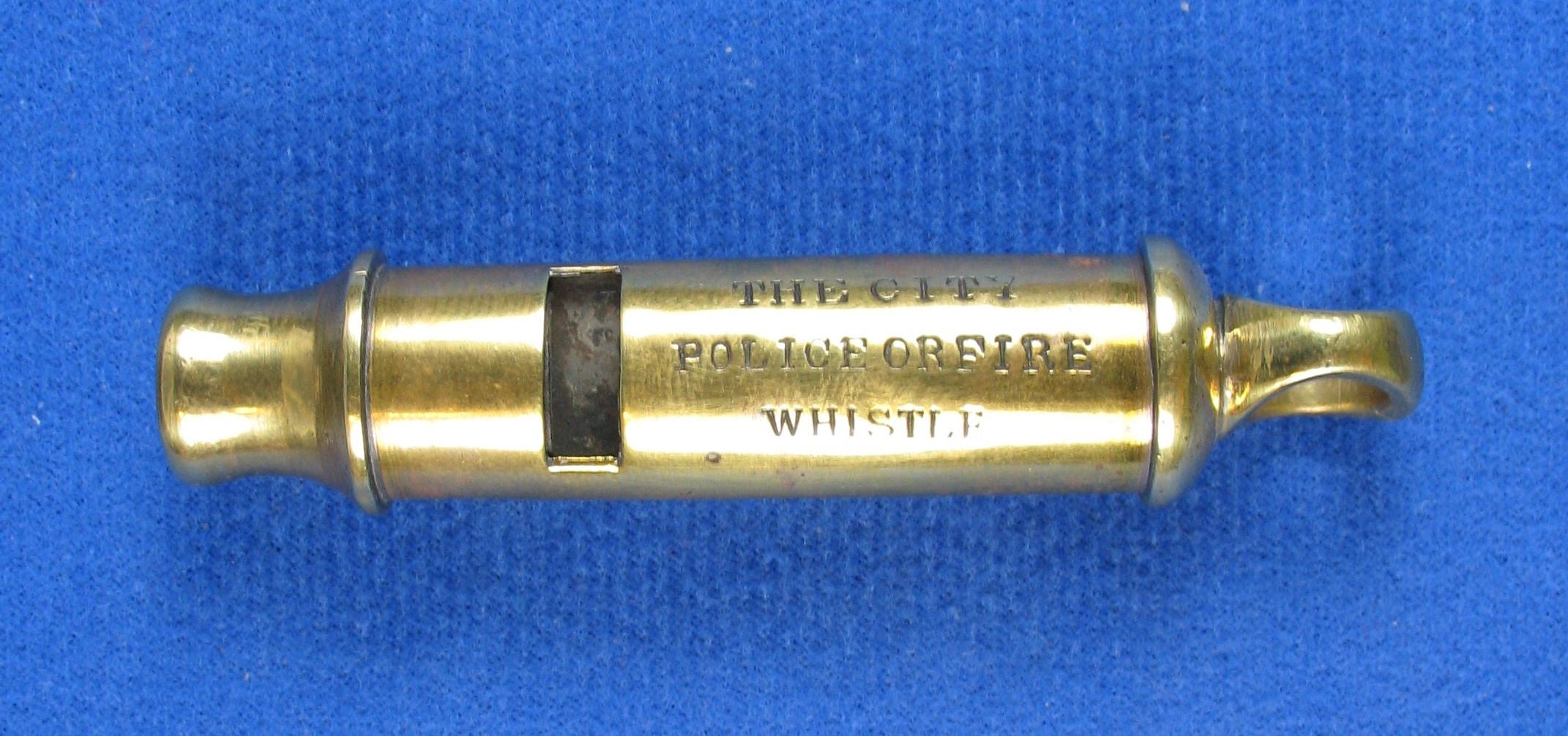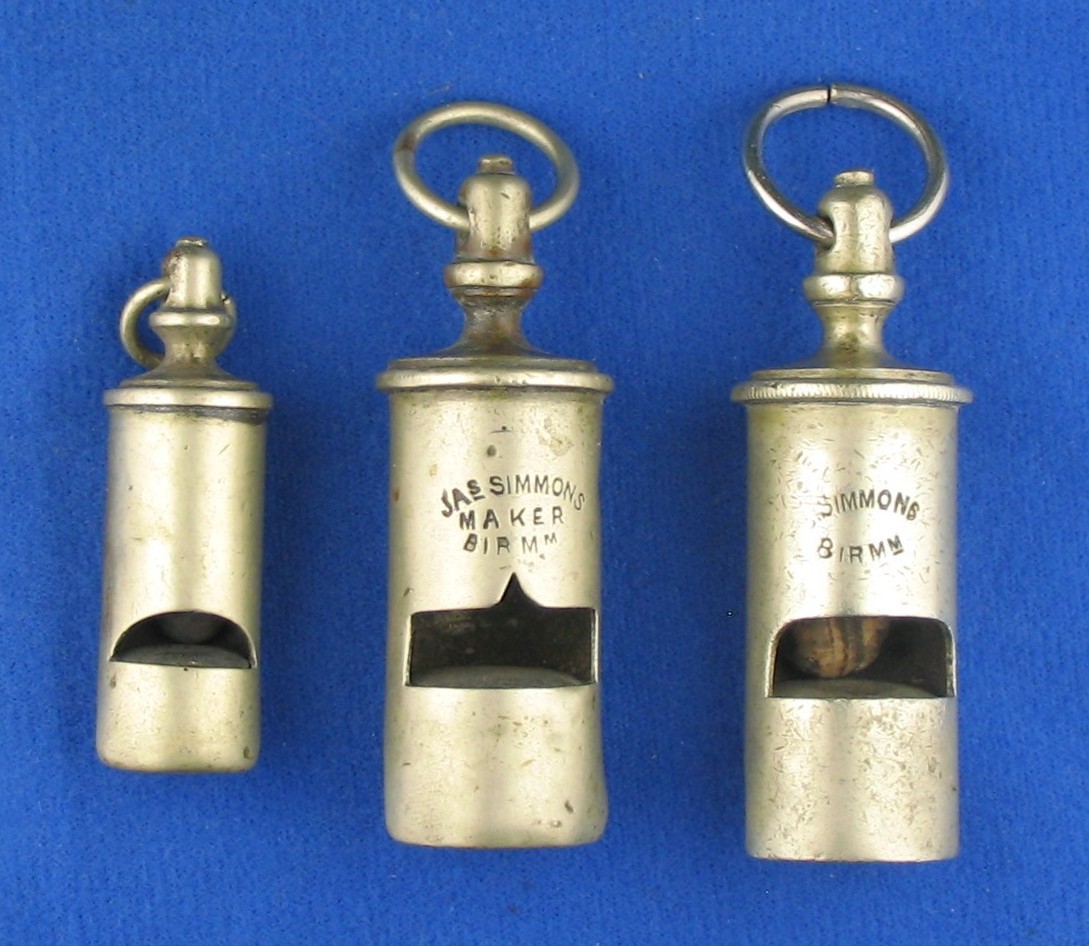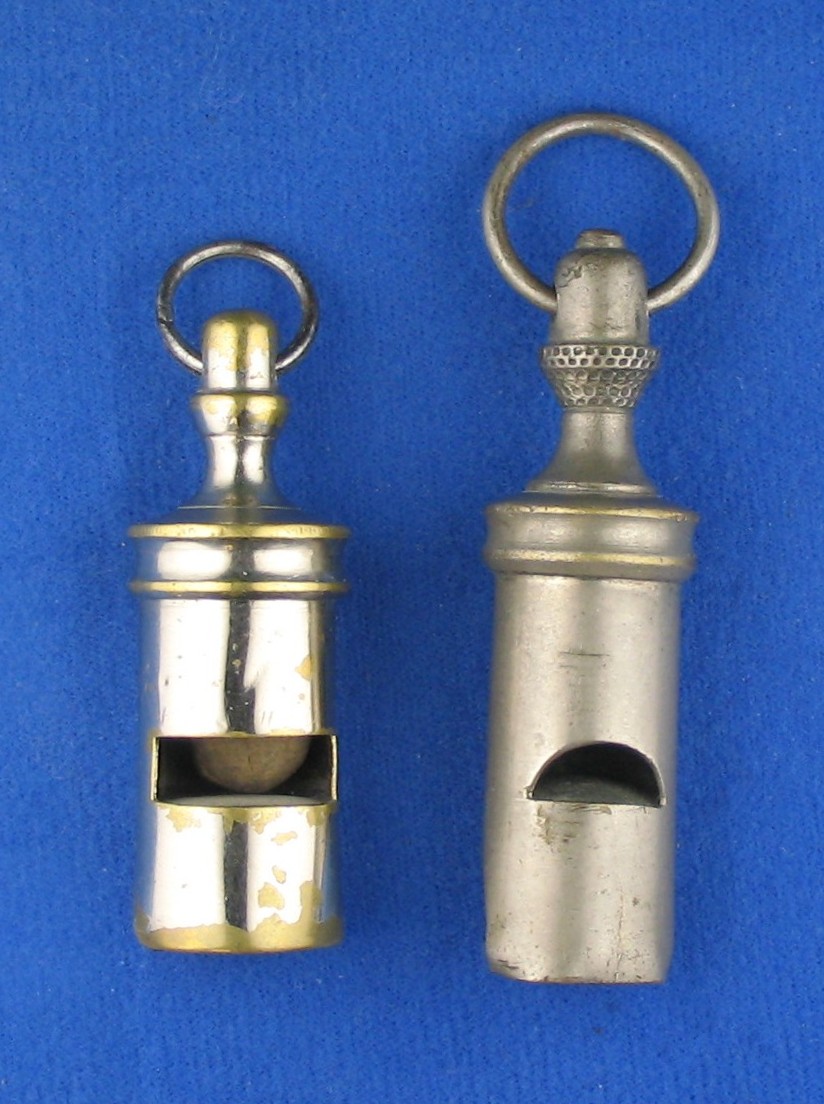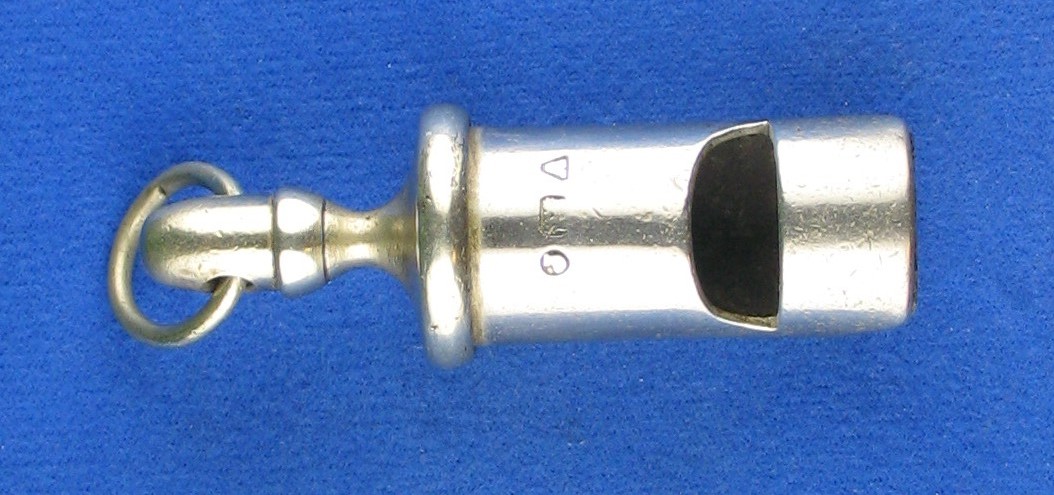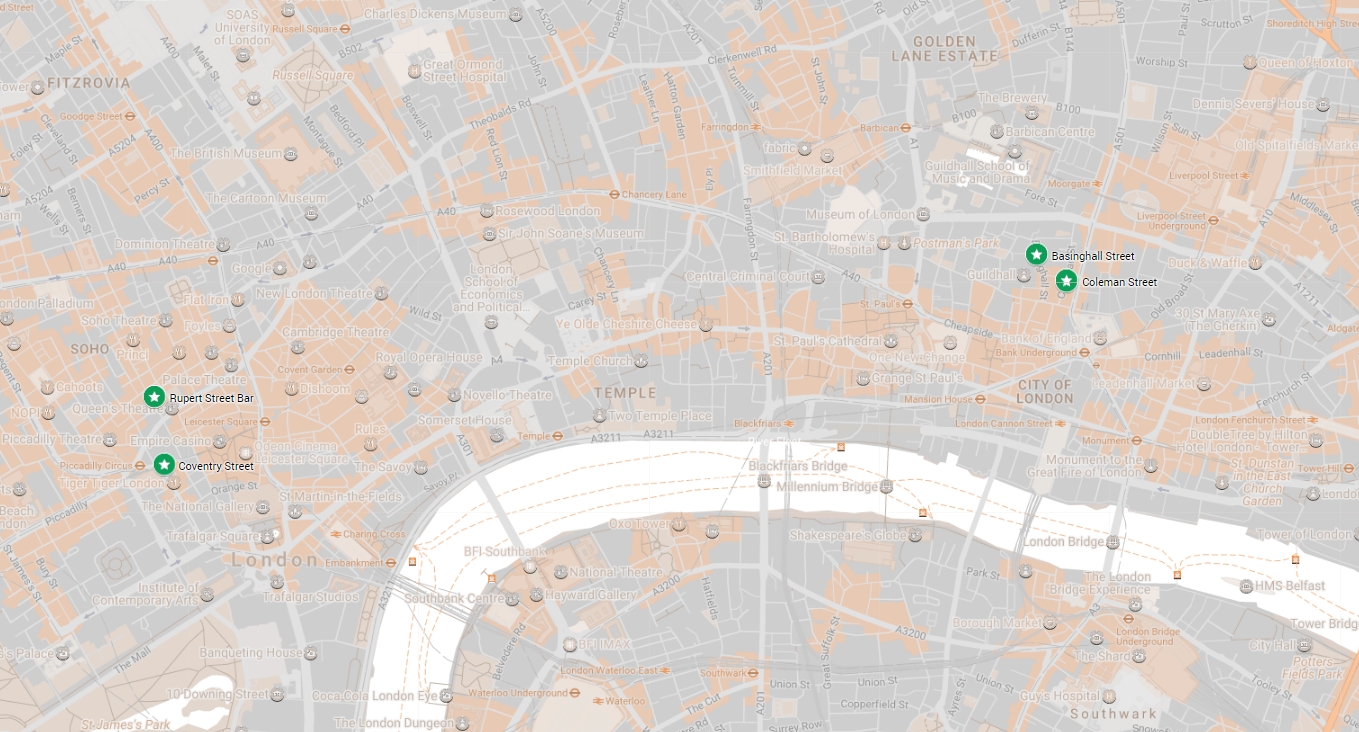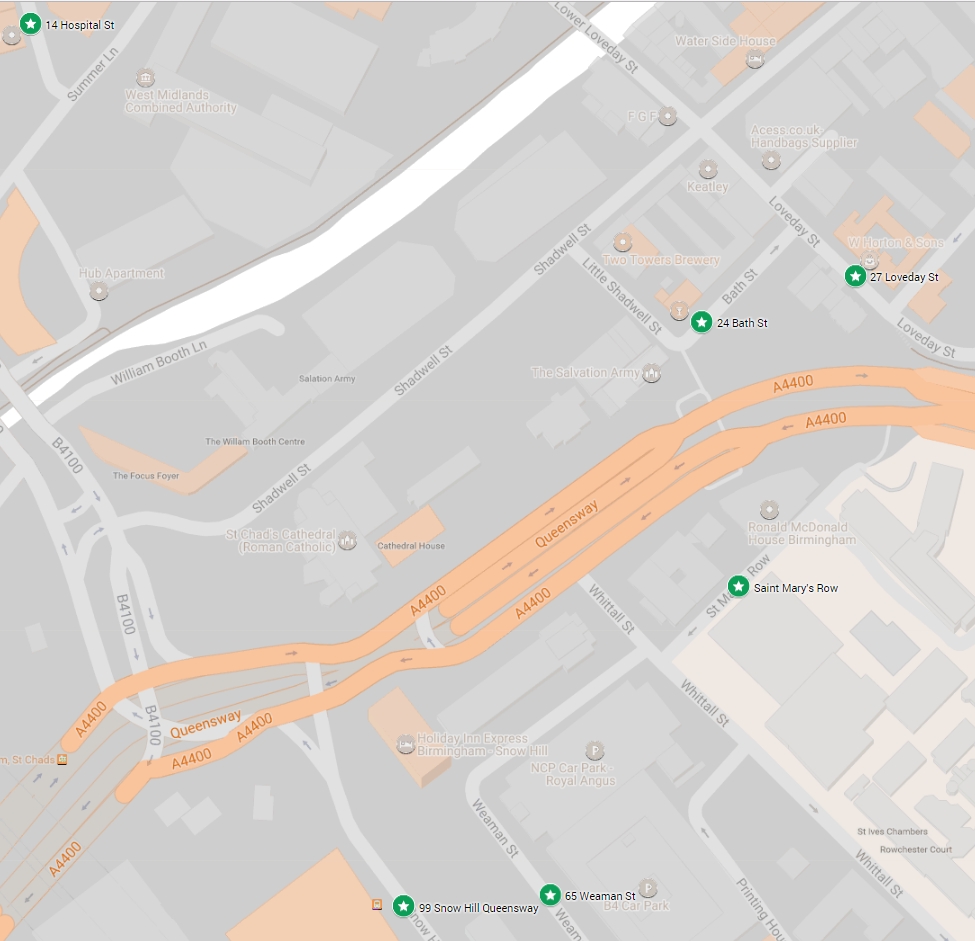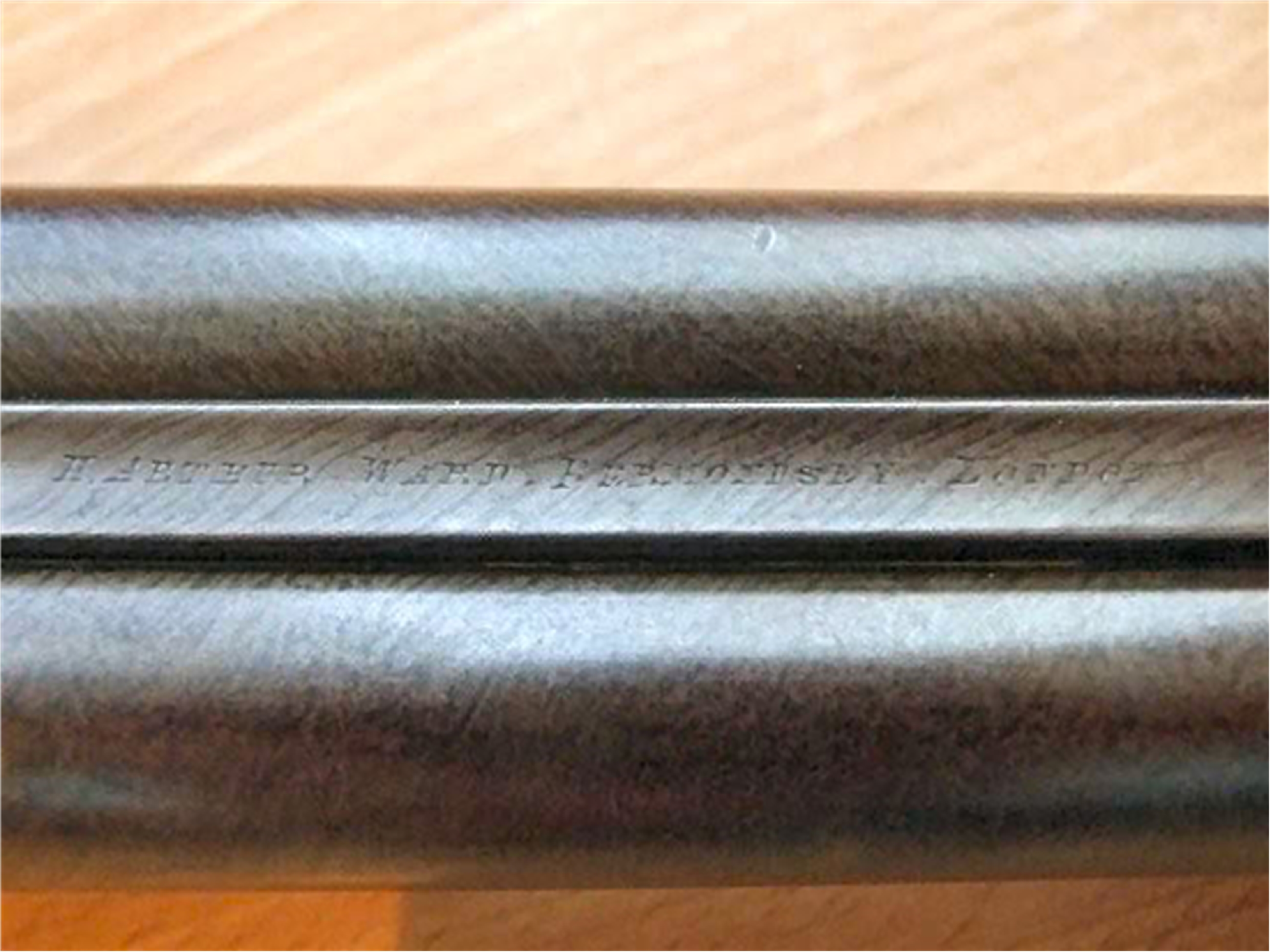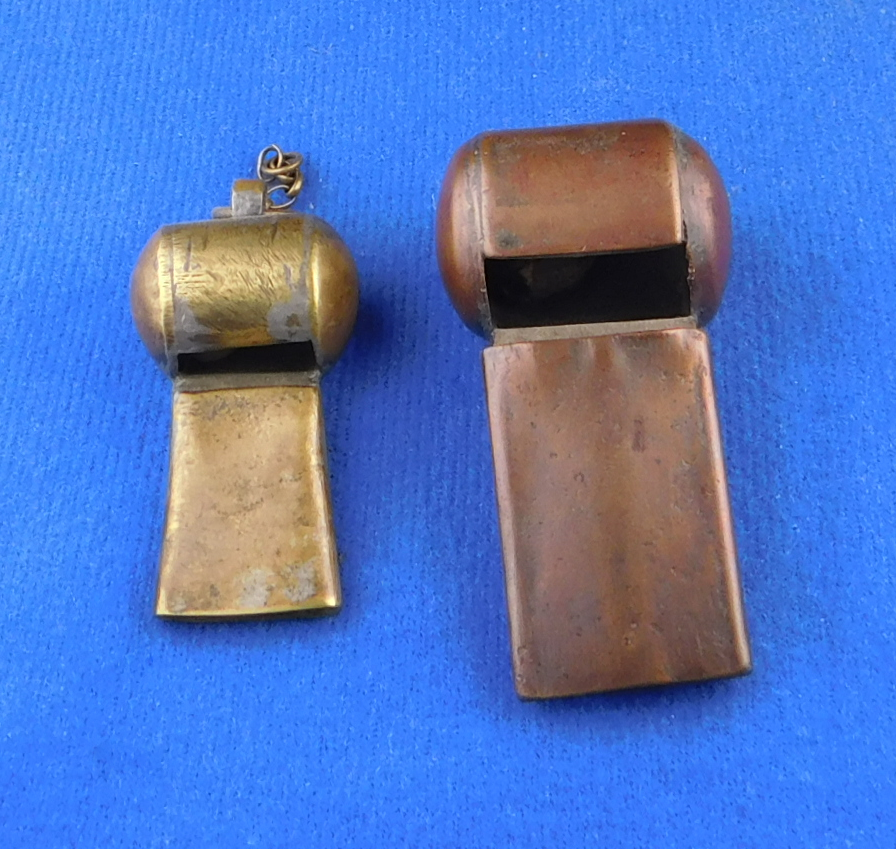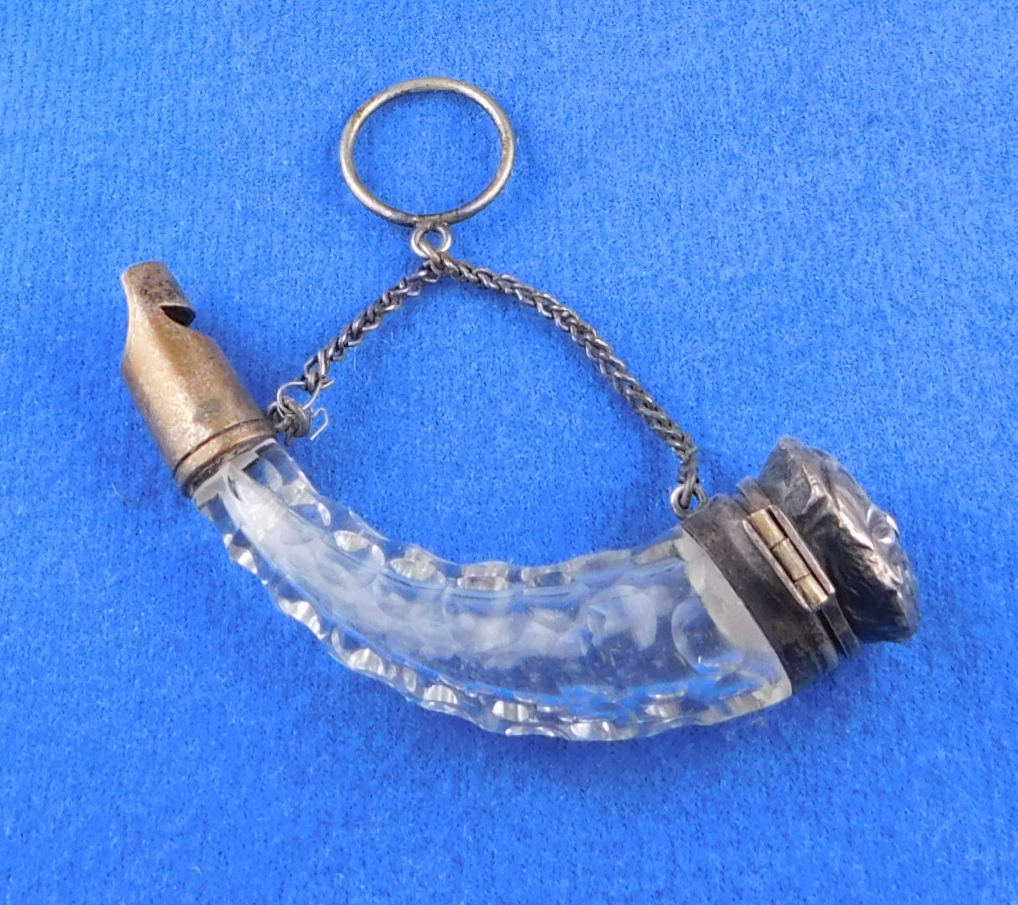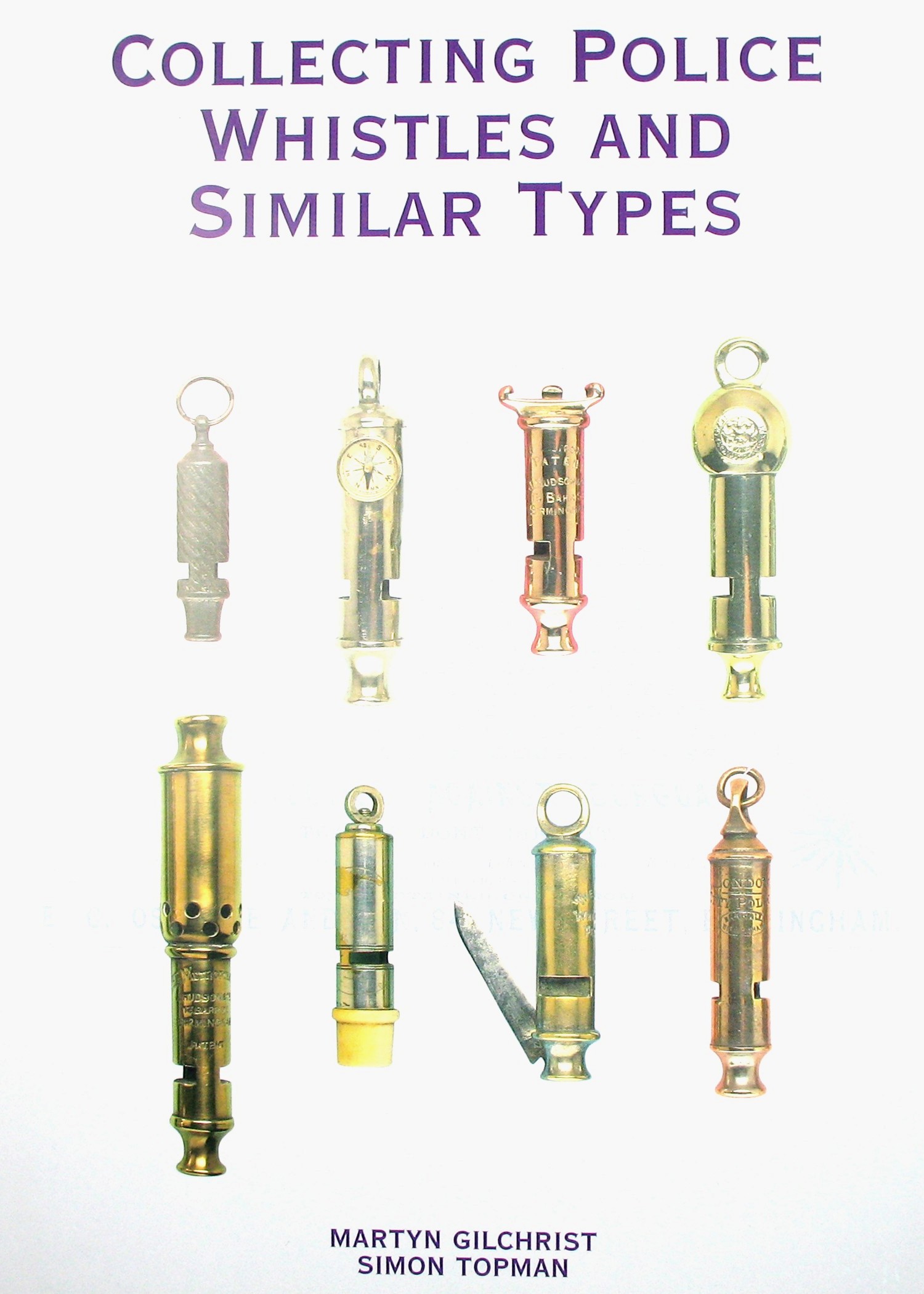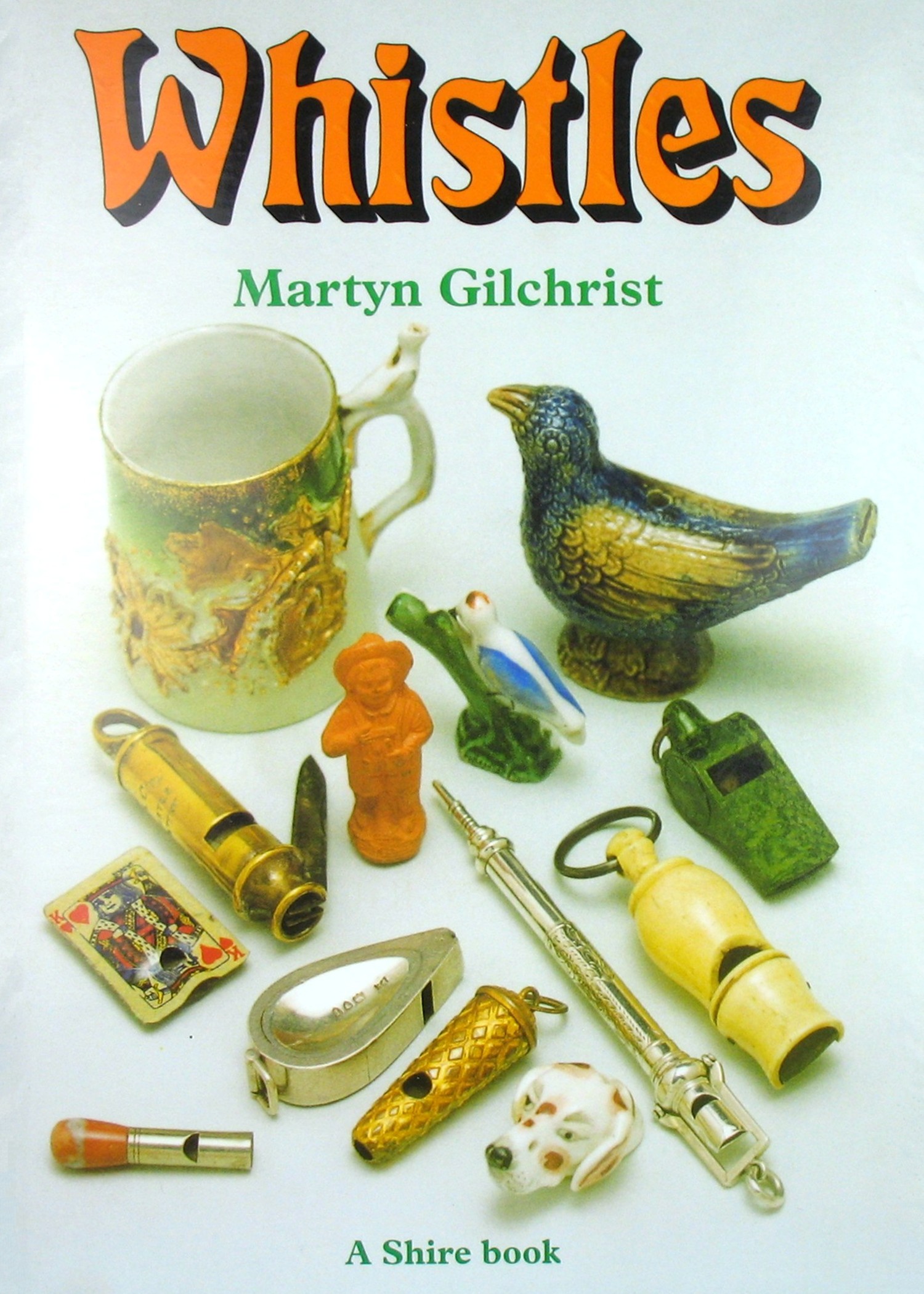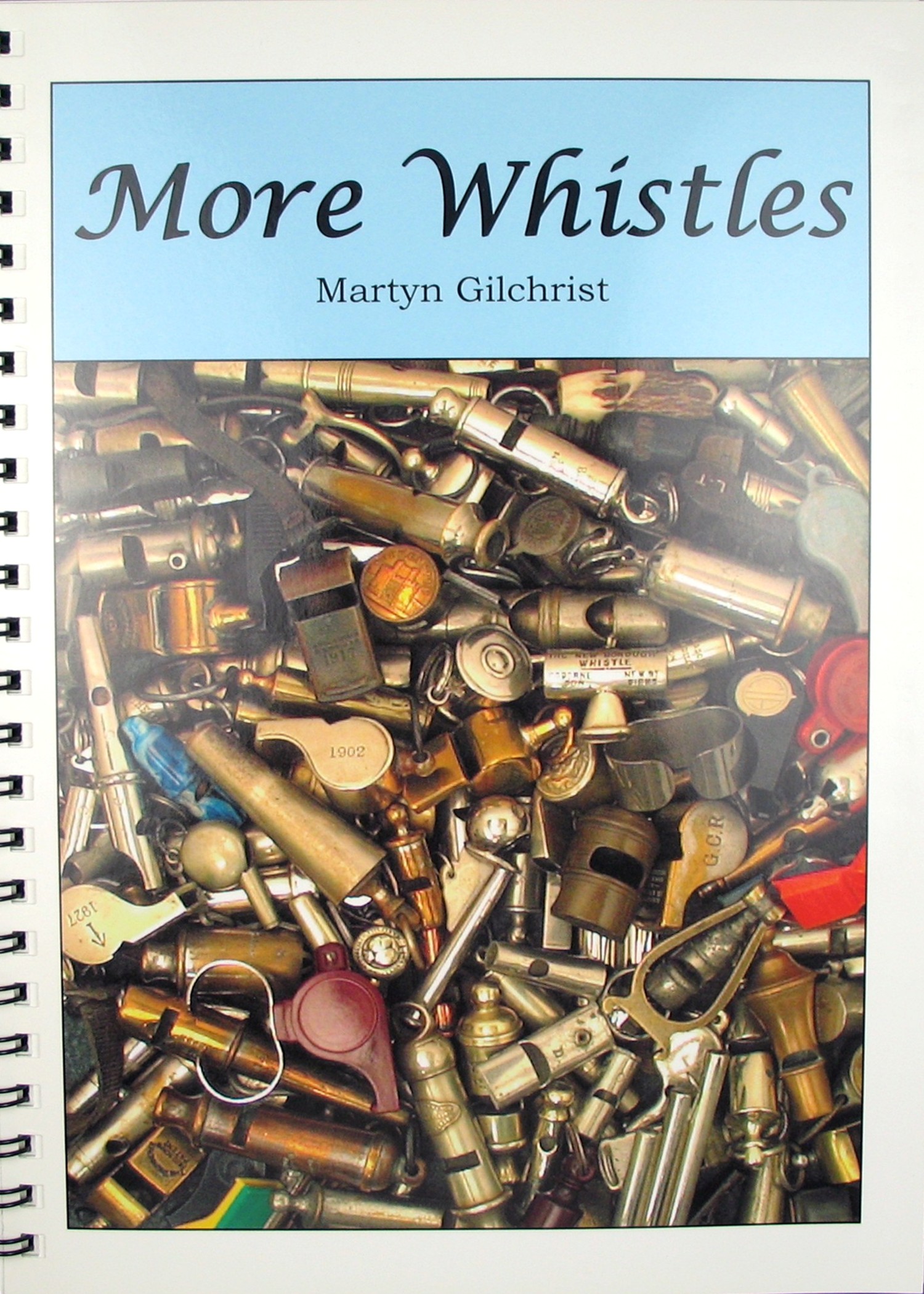Spotlight > Specific Manufacturer > United Kingdom > Ward > 083
Whistory
Henry Arthur Ward was a talented whistle manufacturer of the 19th century who carried over his gunsmith background. He had an early start from his father. His history has been enigmatic and difficult to research because records are duplicated and blurred. Then, when it comes to whistles, because he marked so very few of his whistles with is name or initials, they are difficult to identify. Few advertisements have surfaced. Presented here are records, entries and a timeline gathered from gun sites, literature, business and ancestry records.
Henry’s father James Ward established himself as a letter cutter and gun implement maker from at least 1842 at the age of 35, undoubtable having been supporting himself so prior to this date. It would appear that he was not a gunsmith, at least until his sons joined him. In an 1861 census Henry Arthur Ward is described as a letter cutter and gun maker. He was 23 years old at the time and his brother James ( Jr. ) was working with him along with Albert Thomas. Remarkably records show that James Jr. and Henry were twins, born in 1836. Henry was eventually joined by his son Arthur and George.
Although the claimed establishment has been recorded for his father’s shop from 1824, this would have made him 17 years old and is dubious. Central Gun Works, Ward and Sons Gun Makers is recorded in 1859. Ward and Sons was comprised at this time of James Sr. along with James Jr., Henry and Albert. It would appear that James Jr. died in 1908, five years after Henry.
Albert is described as a merchant & factor in 1881. In the term Merchant and Factor, the word factor indicates that the Merchant will sell things on commission. They may also agree to sell something at an agreed upon commission before the item is grown or made, insuring that if a product can be produced, it will be sold at a known cost and profit. He died in 1892, 11 years later, and 11 years prior to Henry.
In 1879 Alpha Gun Works is recorded and it is with that street ( Russell street ) that a catalog page with model numbers and pictures surfaced. It displays 3 sizes:
( models 23,24,25 ) of 6 piece escargots
(model 11 ) the Improved Speedwell heavy wall dual chamber
( model 35 ) a spherical escargot
( models 1,2,3,4 and 6 ) 5 round whistles
( model 5 ) a GSW
The escargots have Alpha improved stamped on them corresponding to the new business name. In 1879 Henry would have been 43 years and had become a master gun maker, fully capable and perhaps for years, of making quality whistles.
******In 1885 he and his brothers employed about 85 employees.
Questions arise:
- How early did Henry Arthur Ward begin making whistles ??
( Alpha cat. shows an ‘improved Speedwell, Lilly lists an earlier Speedwell ) - Where did he get his early training ??
- Did he learn escargots from P. McDonald who was in Glasgow ??
- Was Peter McDonald associated with Samuel Auld prior ??
- Did HAW stamp his whistles for the Speedwell Cycling Club ??
- Was number 16 on a dual chamber related to a particular race ??
- How many models did he manufacture ??
- Did HAW manufacture beauforts ??
- What was the relationship between Ward and Lilly ( a major outlet )
Pictured here is the catalog picture which can be used to identify some of Henry Arthur Wards whistles.
The Wards, Smiths and Heatons stayed close in their working relationships sharing work, quarters and buildings. Although moving shops frequently they were close geographically.
1842
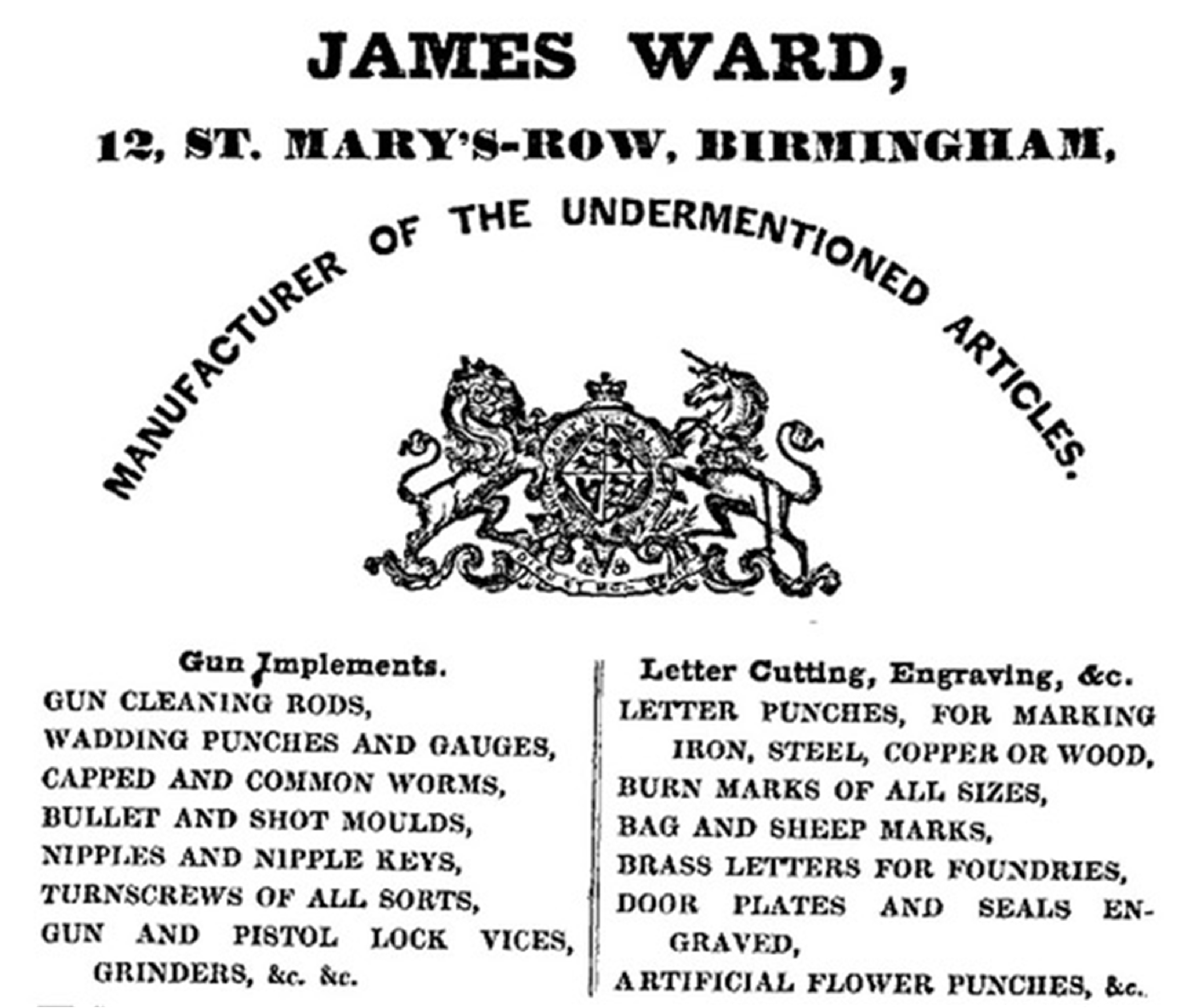
Special thanks to Dan Shouse for finding this earliest advertisement and research.
Special thanks to Karen Player ( mom ) for ancestry research.
James William Ward – 1803 to May 9, 1868 @ 65 – born Derby, Derbyshire England, died Warwickshire.
Wife — Anne Ward ( Adams ) — 1814 April 20 ) to April 13, 1888 @ 74
Son — James William Jr. – 1836 to 1908 @ 72 — Gun Maker and employed 85 men in 1881 census
Wife – Harriet Miranda Cooke ( 1st ) 1836 to 1875
Wife – Fanny Ward ( Padmore ) ( 2nd ) 1835 to 1918 ( married 1877 )
Daughter Ann Sophia – 1839, Nov. 26 to 1934 @ 95
Son — Albert Thomas – 1842 to 1892 ‘apprentice’ ( 1881 self-described as merchant & factor ) @ 50 Daughter — Frances Louisa – 1850 June 15 to March 19, 1929 @ 79
Son-Henry Arthur Ward — 1836 to Dec. 19th 1903 @ 67 Letter cutter and master gun maker gun maker 1881 census employed 60 men, 10 women and 10 boys
Henry was a twin.
Wife — Fanny Jane ( Heaton ) Ward May 2nd 1854 to March 19th 1939 @ 85
Son — Arthur Henry Ward — 1879 to unknown @ 21 gun maker, worker & manager in 1901
Wife – Kate Ward ( Parker )
Son-George Heaton Ward — 1881 to 1941 @ 60
Son-Ralph Heaton Ward — 1882 to Sept 30th 1940 @ 58 yrs. — school teacher, Divinity student in 1901
Daughter Fanny Eleanor — 1885 to Feb. 20th 1933 @ 48 yrs.
The Heatons
Listed as tube makers, brass founders on the same street. ( note addresses )
1817 – Ralph Heaton 1 and Ralph Heaton 11 start 2 business
1847- Ralph Heaton and Son (Ralph Heaton 111) starts on 70-71 Bath Street ( same street as ) Central Gun Works.
1853 – Ralph Heaton and Sons ( George Heaton joins )
*** different Heatons than the Wards married into, but coincidental names.
1890 — Arthur Heaton – listed metal roller and wire drawer – Henry’s brother in law listed together
1891 — George Heaton Ward was living with Henry and Fannie
Whistle Archeology
TIMELINE DATA:
1824 claimed establishment
Central Gun Works – Ward and Sons
1859 24 to 27 Bath st. Snow Hill — First record as J. Ward and Sons
1861 24 to 27 Bath St. – Gun Implement Maker
1870 Expands to 2 St Mary’s Row
1876 H. Ward and Sons est. 55 Rupert Street ( becomes Ward and Sons )
1878 2 St. Mary’s Row – Gun Quarter & 24 to 27 Bath Street, Snow Hill
(– post office directory) Now one business?
Alpha (Gun) Works
1879 14 Russell Street (renamed Hospital St)
1883 15 Russell Street
1886 Alpha Gun Works listed
1890 Alpha Gun Works listed
1888 Central Gun Works name still active – verified centennial international exhibit Melbourne
1894 to 97 65 Weaman St – (misprint Weasman St., Gilchrist CPWs)
1898 to 02 27 Loveday St
1903 ‘H.A. Ward’ – 99 Snowhill
1903 H.A. Henry dies at 65 years of age
1905 Arthur Ward ( son ) testifies for DeCourcy over the ‘thunderer’ tradename in court
H A Ward and Company
1909 two non-whistle patents filed for
1933 located at St. Mary’s only
1938 trading under Ward and Sons, (purchases Warwickshire Gun & Manuf. Co. Ltd.
1942 purchases Arthur Illsley & Co. (former employee)
1964 ceases trading
From 1933 the firm no longer occupied the Bath Street premises, they operated only from 2 St Mary's Row.
On 18 January 1909 J B and A B Ward registered patent No. 1243 for a heel plate safety for hammer guns. On 15 November 1909 J B and A B Ward registered patent No. 26445 for a trigger blocking safety.
In about 1910 and 1912 the firm may have had additional premises at 131 Steelhouse Lane, but this has not been confirmed. By this time the firm was owned by A B Ward.
No relationship has been established between these Wards and the Henry Arthur Ward family.
Henry Arthur Ward whistles have been found in brass, nickel silver, ‘white metal’. Nickel plated brass
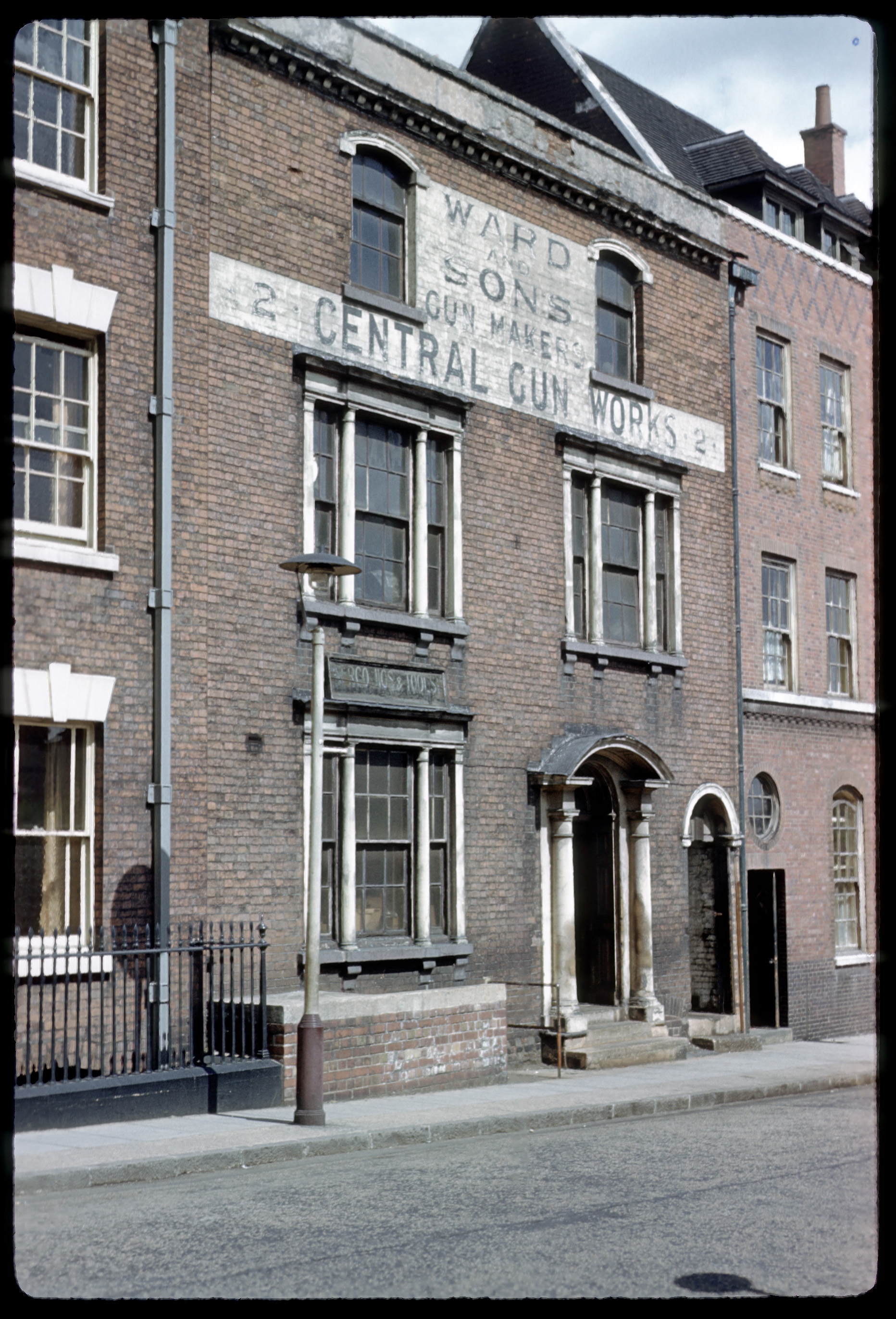
Photo Courtesy of Phyllis Nicklin, 1960
Known stamps as follows:
Rounds-
Tally Ho
Hound
Express
Midget
H.A.W. BM
Dual tube-
Speedwell
The City Whistle
Escargot-
Alpha Improved Call No 25
Alpha Improved Call No 24
Alpha Improved Call No 23
Pl Patent ( back stamp )
Thunderer
The Very Whistle No 23
H.A.W. BM PL patent ( P L means provisional )
H.A.W. BM
GSW
The Standard Police or Fire H Arthur Ward Birmingham
The Standard Police or Fire Scout
The City Police or Fire Whistle
City Police or Fire Whistle ( large lettering )
City Police or Fire Whistle ( small lettering )
C.T.W.S Call Whistle
A.P.G. & Co. Birmingham
Beaufort
Faulkner ?
The following Express round is also found with a notched upper window opening.
The following two whistles are perfect matches to the internal construction of Ward’s rounds.
The Keeper is a trade name for Lilly. Lilly contracted Ward to manufacture whistles for them and this likely sold through them.
The midget stamp, which is the smallest whistle found of Ward’s, plus a matching round of brass, are classic Ward. The brass on the right is 45mm or under half the size of the following whistle.
Compare the midget to this colossal round Ward. It is a massive whistle and measures 92mm ( or over 3 ½ inches ) It weighs out at 102 grams or 4 ounces ( ¼ pound the weight of a hamburger patty ).
Dual tubes are covered in SPOTLIGHT number 79 – Heavy Wall Duplex
Here is a group pictures plus one other not in the reference collection also covered in that article for inspection of the stamp.
References have been found for the Speedwell Cycling Club, articles dating circa 1885. Founded in 1876 as the Speedwell cycling club, it spread to Australia.
Was Ward’s stamp for them ? Was the following whistle a presentaion whistle ?? Perhaps research will tell.
The following is stamped number 16, However it is model number 11 in the Alpha page. It is a Ward heavy wall dual chamber with unknown stamping for H and P’s.
The back stamp is for Speedwell a stamp used by Henry Arthur Ward.
Henry Artur Ward started making escargots very early on in their progression. He is dated to a business connection with Peter McDonald circa 1890, but was eclipsed by Samual Auld. They started a patent process, but abandoned it.
His series of Alpha and matching models of 23, 24 and 25 sizes are rare to find and if stamped with HAW, rarer. The Thunderer may be the ealiest stamping of the name. Who actually coined this name ??
It is ironic that Arthur Henry Ward would appear in court to testify against Hudson for claiming sole right to the Thunderer name along with Alfred DeCourcy. It would stay in the public domain until Alfred DeCourcy sold out his company and the last of Hudson’s competition had been bought up. Perhaps that influenced the court decision to grant Hudson possession of the name Thunderer.
Patent 2980, February 1890 was applied for, but later abandoned.
POSSIBLE WARDS:
For its time this was a remarkable spherical escargot ( as pictured in the catalog model 35 )
Several white metal stamps.
Possible Ward whistles….
These Simmons stamps are listed in CPWs as listed known stamps made by Hudson. However the inside makeup and other features point toward H.A. Ward as the actual manufacturer. Note the three types of window openings.
Possible Ward model number 4. Matching construction on its companion.Note the acorn finial. Neither one unscrew. Two more window types.
Possible Ward ‘watchmans’ whistle
J Ward & Sons were among the last firms to make flintlock muskets and Long Dane guns for the Africa trade, muzzle-loaders and hammer guns; these were made up to the late 1920s and 1930s. The firm's trade mark was a target.
1890 HAW was associated with Peter McDonald in Glasgow – One wonders how did they get together??
McDonald was in Glasgow, Ward in Birmingham ??
Distance between Bermondsey to Bath is 3 miles
(1899 – Bermondesy created, from 4 parishes, 2 are St. Mary – Wikipedia
Bermondsey (also known as St. Mary Magdalen, Bermondsey))
– TWG
Posted February 5, 2018

082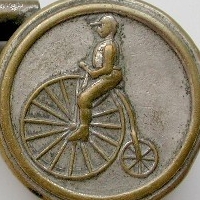 Cycling Whistles |
|||
|
|
© 2025 – All photos with blue background property of The Whistle Gallery reference collection.
Use of photos without authorization is prohibited. – Gallery questions, please contact [email protected].
Bibliography
British Gun makers – Boothroyd's directory
Nigel Brown's big book of Birmingham gun maker
Post office directory Birmingham – 1878
Collecting Police Whistles — Gilchrist and Topman
A Concise Dictionary of Guns and Gun makers – John Walker
Kelley’s directory
London Gun Makers Association
British Gun Makers. Nigel Brown
Birmingham Gun Barrel Proof House
John Smith from The Gun Club, UK – on line.
Records of Birmingham gun makers
Cyclist
Grace’s guide
The Dart and Midland Figaro 1886
Knowledge 1885
